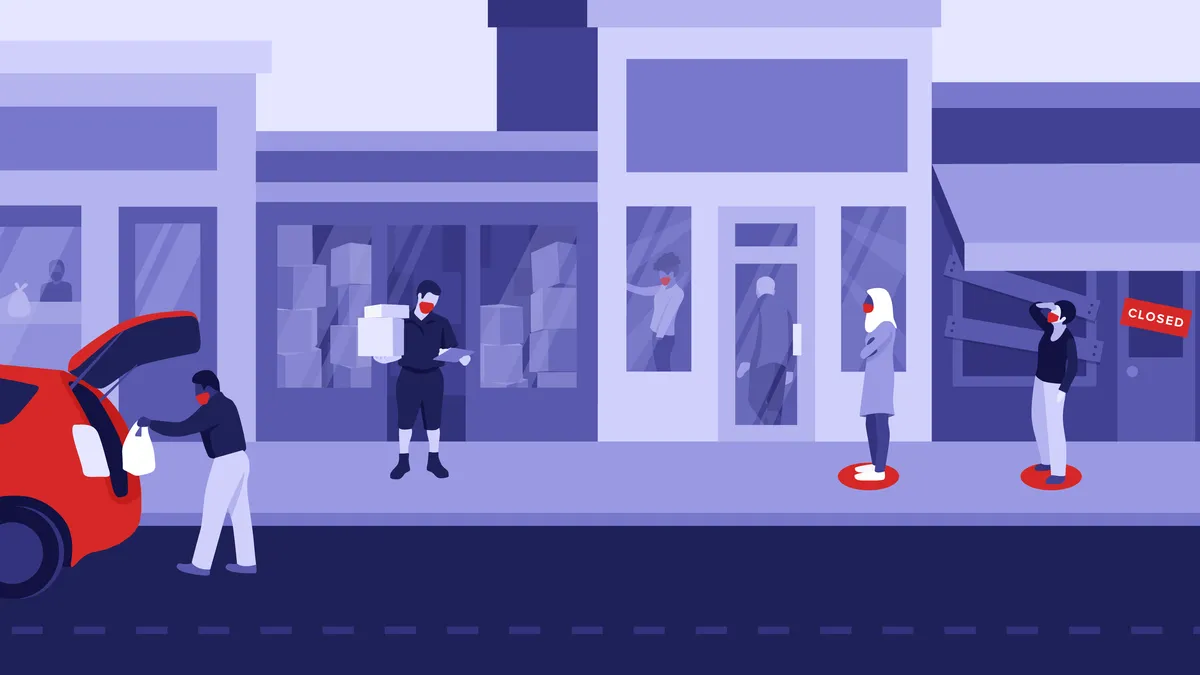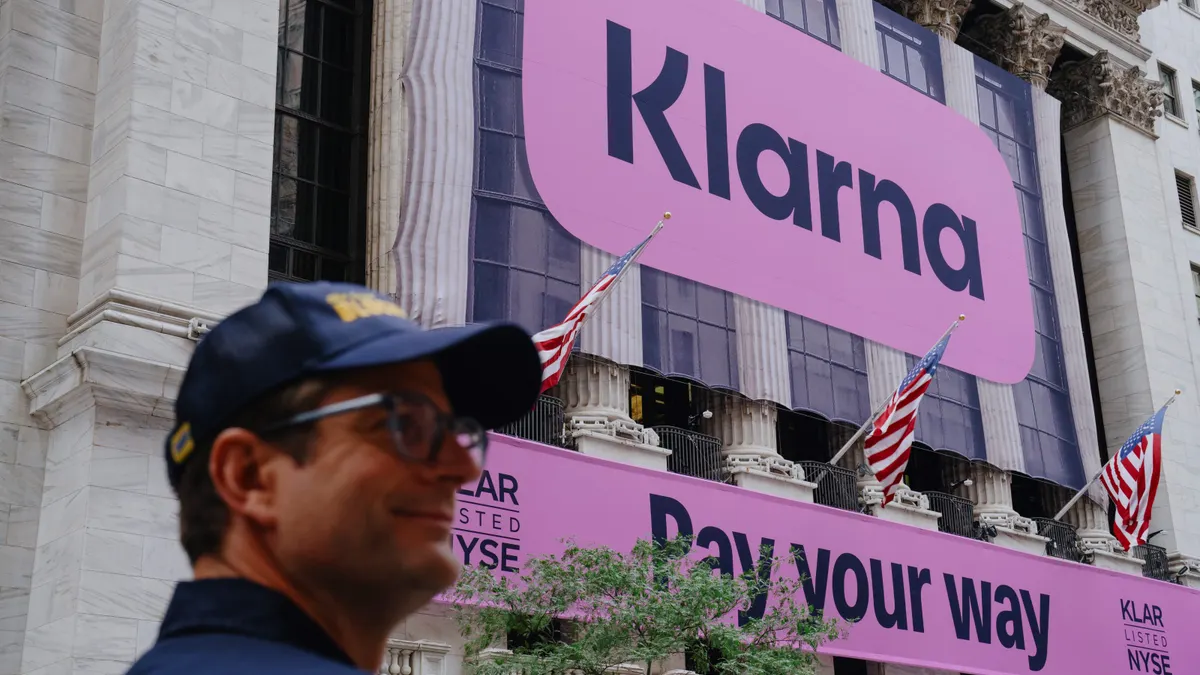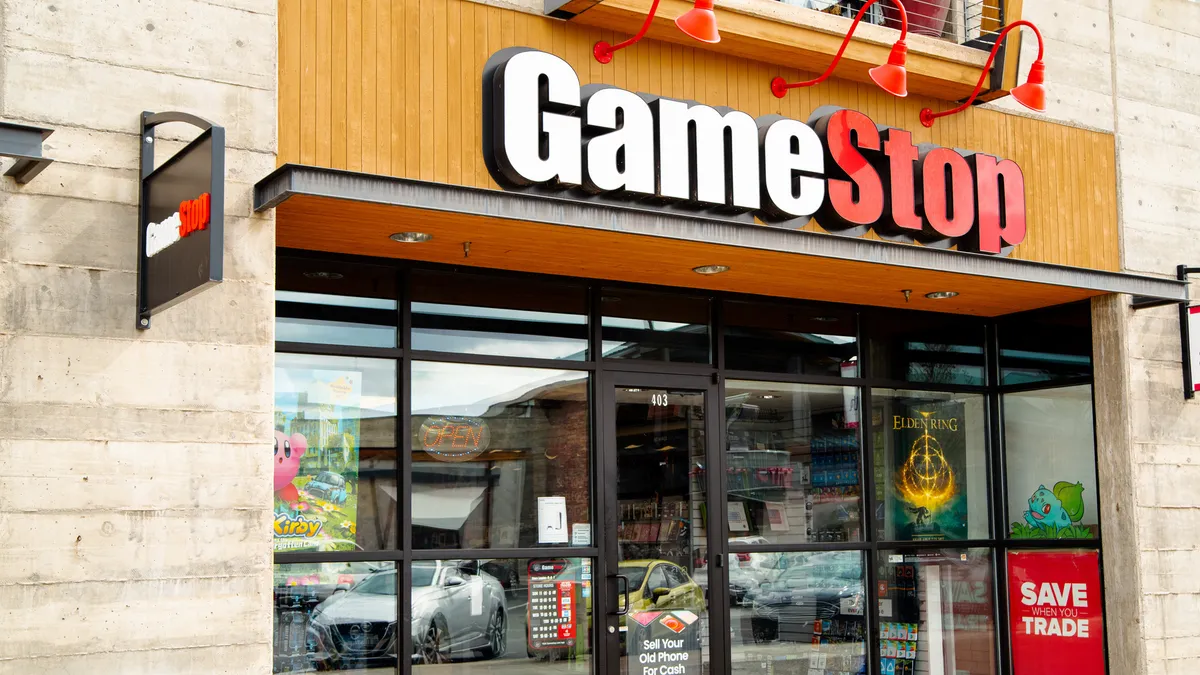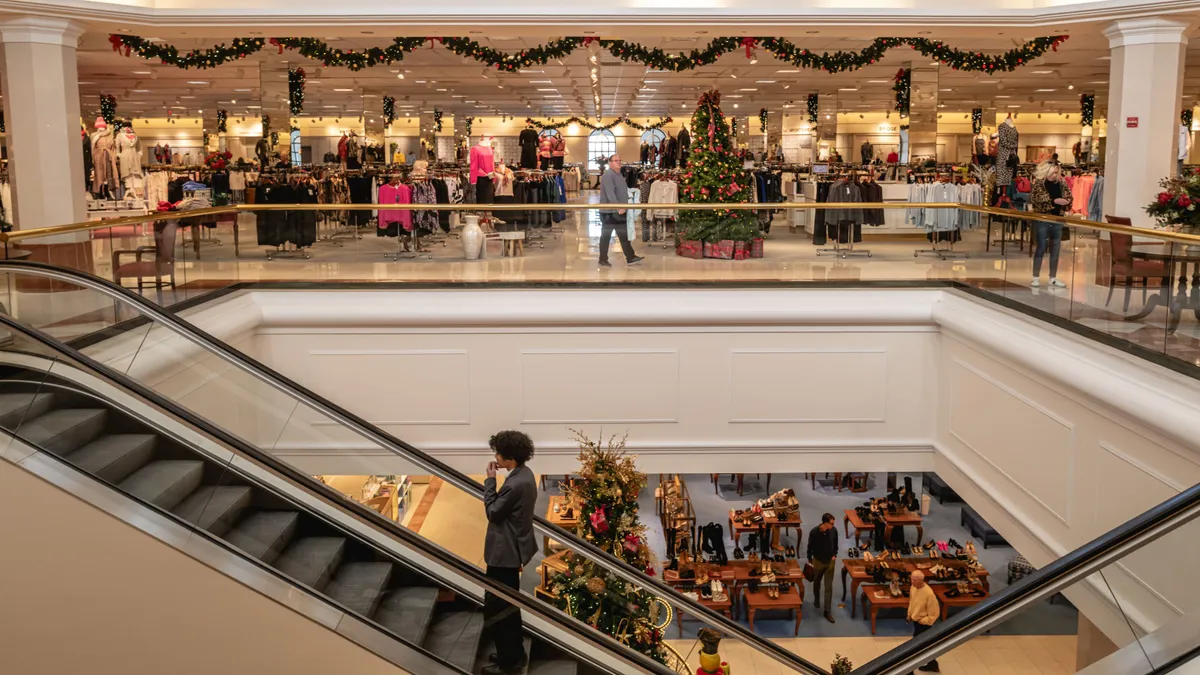Editor's Note: This story is part of a series about the pandemic's impact on retail in 2020, and what it means for 2021. Find the rest of the stories here.
The formula of where to locate a store involves many variables — rent, lease terms, parking, zoning, visibility — but perhaps above all is going where the people are.
The pandemic has shuffled much of that, including the tenant-landlord relationship. Even more profound is how it may have reshaped consumer habits, including where they shop and even live, for the longer term. The disease outbreak and its changes to daily life may be reversing a decade of migration into cities and ushering in a work-from-home practice that could last even after social distancing is no longer required.
"The ramification of not going to work every day, and everything that is happening locally, is almost beyond comprehension," Lee Peterson, executive vice president of thought leadership and marketing at WD Partners, said by phone. "It changes the landscape in retail. Everyone's home in this five-mile radius."
Downtown is down
City centers have been eerily quiet for nearly a year now, as both office workers and tourists stay away, and it's unclear when or to what extent they'll come back.
Before the pandemic, the vast majority of office workers, about 90%, were in an office setting five days a week, according to commercial real estate analytics firm Green Street. That's predicted to decrease. Adding the caveat that "any forecast beyond that requires educated guesswork," Green Street now expects that percentage to fall to 60% in the next five to 10 years. A quarter of the other 40% who won't go to the office daily, or 10% of the total office-using workforce, will work from home full time, which "equates to a 10-15% hit to net office demand," Green Street said.
Moody's commercial real estate arm Reis forecasts the national vacancy rate to rise to 19.4% by the end of this year, peaking at about 19.7% by 2022. That could go even higher depending on what employers decide about their space needs — decisions that may not be finalized until "late this year or next year and beyond," according to a Jan. 15 report.
That's the climate that leads Green Street to expect higher income consumers to move to "the suburbs and low-cost markets, potentially upending the long-running megatrend toward urbanization." Because of this longevity of remote work, the firm expects many people to opt for areas with nice weather. Such an exodus could hurt city budgets, which could lead to fiscal issues that only exacerbate the trend, according to an emailed report.
Others are not so sure that cities will lose their appeal, considering that, due to the pandemic, people miss the convenience and culture that they offer. Walter Marin, founder and senior principal of New York City architecture and design firm Marin Architects, believes that many will return once the pandemic has passed.
"There's a dynamic to living in the city that you can't buy anywhere else," he said by phone. "There's a certain life that you can't substitute, and right now it's temporary. I don't think people are selling their apartments, they've just bought another one. And one thing about the emptying out is that it's a massive opportunity for other people."
That's true for retailers as well. More rational rents are opening up city centers to new tenants, according to Jill Rowe, a partner at law firm Venable who represents real estate brokers, owners and commercial tenants. "Here in San Francisco, it used to be impossible to get any space downtown, and now people are snatching up better locations at better rents," she said by phone. "So there's been sort of a leveling of the market and opportunities are being seized."
Plus, within metropolitan areas, thanks to urban dwellers opting to stick around during the pandemic and beyond, neighborhood shopping districts have been enjoying better traffic and sales than malls or downtown areas, several analysts said.
Kenneth Lamy, CEO of financial management firm Lamy Group, who works with commercial landlords, says such areas, and the stores and restaurants in them, may more readily bounce back from the challenges of the pandemic. It could be why Gap this year decided to close its downtown San Francisco flagship, and why Foot Locker and Nike have recently opened up neighborhood-based stores in Los Angeles.
"I think stores in those communities, those neighborhoods, will recover faster, because they're supported by those who live in that neighborhood," Lamy said by phone. "They don't have the distance, the geography is convenient. You don't have to jump on a subway, or you don't have to get in your car and drive to the mall. So I think they will be definitely earlier to see momentum that starts, while for the others it'll take a little bit longer."
More broadly, consumers have been conscientious about frequenting their local shops during the pandemic, and that will likely continue, according to Katie Thomas, who leads retail think tank Kearney Consumer Institute and studies consumer trends.
"I think the rise of the local is really something that will stick," she said by phone. "I think there's actually more potential with malls to reinvent themselves exactly in that vein, to have more local to consider. It used to be a good thing that every mall in America kind of felt the same and now that's not what we're looking for. We're looking for more evolution, things coming and going, local businesses."
The mall is tumbling down
Unfortunately for malls, there's a lot of retail space that could be available to local retailers, especially traditional enclosed shopping centers.
The retail vacancy rate rose to 10.5% in the fourth quarter, the highest since 2013 (as was the third quarter's 10.4%), with rents down, according to Reis. The mall vacancy rate rose another 0.4% to 10.5%, the highest in more than two decades. There's "trouble brewing," even for upper-tier malls once considered mostly immune to the challenges at lower-tier ones, according to a recent report from S&P Global Market Intelligence.
The declines speed up with every closure announcement, especially by department store anchors and former mall mainstays like Gap Inc., which last year said 350 stores would close, mostly in malls. American Eagle Outfitters in January said it would close as many as 225 stores by 2023, and that newly signed leases would be for shorter terms. CEO Jay Schottenstein said at the company's Jan. 21 investors day that the retailer has developed a modular system that allows 80% of a store to be moved to another location rather than dismantled, giving the company more flexibility in where it runs its stores.
Open-air malls and strip centers are faring better than enclosed malls, in part because retailers from Macy's to Gap join Target, Kohl's and others in taking advantage of the more convenient parking and smaller square footage. They haven't been spared the fallout from the closures and bankruptcies that accelerated last year: Their fourth quarter vacancy rate reached 10.5%, up from 10.4% in the third quarter and 10.2% in the fourth quarter of 2019, and the highest since 2013. But those centers in 20 metro areas saw rent increase, while another eight held steady, Reis said.
In recent years, decisions about store location have centered around where not to run a store, leading to a raft of closures only accelerated by the pandemic. Now, an unusual amount of flexibility from landlords and tumbling rents could lead to more stores opening, sometimes in unexpected places.
"Now in the little neighborhoods, the strip centers, the little areas with shops, a lot of things could open that would work really well," Peterson said. "How cool would it be if your favorite clothing store was down the street?"






















